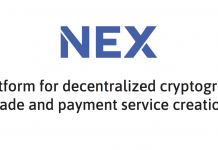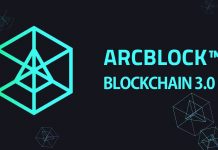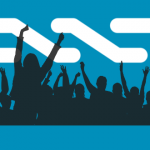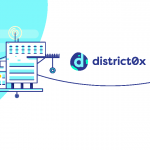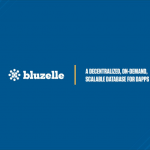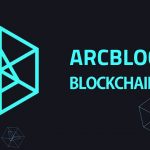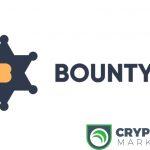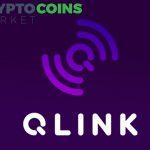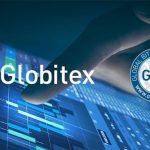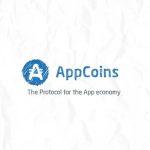ICON is creating a massive scale ecosystem powered by the ICX smartcontract token.
PROJECT OVERVIEW.
ICON is creating a massive scale ecosystem, allowing different blockchains connecting to one another through their protocol. Universities, security firms, banks, hospitals and other private blockchains can all share information through ICON’s online ledger without intermediaries. The ecosystem is powered by the ICX smartcontract token.
BACKGROUND.
Hundreds of blockchain projects are cropping up around the world but the technology’s true potential to seamlessly share information is still largely untapped. Generally, the majority of blockchain projects place emphasis on their decentralization methodology and lack evidence of adoption in the real world due to their business limitations and technological limitations in terms of performance, ease of use, and service quality.
The ICON Project aims to overcome such challenges and help advance our society towards true hyperconnectivity. ICON is collaboration between theloop and Dayli Financial Group, a house of Korean fintech startups to allow government departments, universities, hospitals, securities, banks and any private company to interact without third-party networks that charge transaction fees or delay the process.
Theloop is a specialist in the domestic blockchain technology that has been providing blockchain based solutions in Korea for well over 2 years. The loop have developed an open source enterprise blockchain engine called loopchain. This is a customized blockchain solution that can be optimized for various environments from financial services such as authentication, liquidation, and trading to non-financial business such as IoT environment based on its own modular structure.
HYPERCONNECT THE WORLD.
We live in a world where it is possible to buy a cup of latte at Starbucks with one swipe of a credit card. But in fact, there is a more complex process behind the scenes. The information acquired from POS terminal including card number, expiration date, billing address, and CVC are stored and transmitted to the databases of seven (7) intermediaries such as a front-end processor (FEP) company; various fees are incurred at each stage of the process. The credit card network is a centralized system that depends on security and reliability of trusted third parties.
ICON is a decentralized network rather than the existing centralized network. Transactions on the ICON Network are verified by a ledger shared within the community network itself, not controlled by a centralized authority. This minimizes the involvement of unnecessary intermediaries, which significantly reduces the fees.
In addition, decentralization ensures autonomy and independence of the community. In order to be connected to a centralized system, it is inevitable to passively accept the policies and system determined by the centralized organization. For instance, to use VISA or MasterCard for payment, it is necessary to use their designated system and follow their policies. However, the ICON Network allows each community to autonomously determine the appropriate systems and policies, while reliably connect to other communities when needed.
Each community can have its own currency and sets its own rules, even its own consensus algorithm. Likewise, ICON allows the flexibility to create communities in various different countries with various different laws and regulations for crypto companies.
ICON aims to eradicate the various boundaries that have been existed in the centralized system. Tokenization of assets and rights are being accelerated, and as a result, the dynamics of cross-border connections is being redefined. Existing currencies, tangible assets such as real estate and automobiles, intangible assets such as patents, copyrights, and trademarks, our legal rights such as voting rights and citizenship, and even DNA data or blood test results can benefit from tokenization.
This forces us to rethink everything, even obscures the space-time boundary, and makes distinguishing tangibles from intangibles meaningless. It is possible to trade 0.2 apartments with 0.8 cars, and insurance fee can be directly paid by uploading 5 posts on an SNS.
INTENDED USE CASES.
- Blockchain ID. Blockchain ID is issued through Smart Contract and can be used for verification in all communities. Open your next bank account in seconds. Receive student discounts without showing physical student IDs.
- Payment & Exchange. ICON Wallet can transfer, settle, and exchange currencies in real time through DEX (Decentralized Exchange). It can be used in everyday lives with the community network – banks, securities, insurance, universities, and much more.
- DApps. The way ICON handles DApps is different – while on the Ethereum network, it’s required to use an EVM (Ethereum Virtual Machine) on a node, which can slow down the processing functions of that node. On ICON, DApps are executable files which run on local nodes that are directly benefiting from the execution of the DApp. There is no EVM, and while this isn’t directly specified, it’s likely that these DApps will be more function oriented and not be Turing Complete.
Ultimately, the systems built for one purpose – like for identity verification – can be utilized by other applications within the ICON network. For instance, Blockchain ID can be issued by financial securities community and be used for ID verification in all other communities. Likewise, ICX issued by hospitals can be used for payment & exchange in all other communities.
FEATURES.
Scalability.
While competitors such as Ethereum (and their corresponding ERC-20 tokens) are capable of communicating with each other due to being on the same network, there can be a lot of problems that come with it, such as lag backing up the network, and the largely unrelated transactions of other ERC-20 projects that simply clog the chain as far as any individual project is concerned.
With ICON, a nexus is created between as many blockchains as desired and new ones can be created. Nexus is a multi-channel blockchain comprised of light client of each respective blockchain. Each blockchain is connected to Nexus via Portal and each Portal, basically the representative of independent networks, participates in Nexus blockchain network as a node. Since Nexus is built on the basis of loopchain, its consensus is reached based on LFT consensus algorithm, one of the loopchain.
Usability.
ICON brings blockchain technology into our everyday lives. The team behind ICON has been building real-world applications for real communities. In addition, ICON will benefit from ‘DAVinCI,’ an artificial intelligence solution trusted by some of the largest financial institutions in the world.
Decentralization.
ICON envisions a decentralized world consisting of free communities. ICON is a decentralized network where communities with different governance structures can connect and interact. ICON allows anyone to join the ICON Network by creating a new DAPP with independent governance.
Consensus.
ICON’s loopchain uses a Loop Fault Tolerance consensus mechanism, which is basically an enhanced Byzantine Fault Tolerance (BFT)-based algorithm that promotes faster consensus and ensures the finality of the consensus without the possibility of forks within the network. LFT limits the number of nodes the Block Generator broadcasts (rest of the nodes participate in voting only) and reduces steps for consensus by pipelining, also manages voting rights by node grouping.
SCORE (Smart Contract On Reliable Environment).
SCORE is an enhanced smart contract feature of loopchain. SCORE is designed to ensure high performance contracts run directly in the node operation environment without a separate virtual machine (M). SCORE can be easily deployed and created for various applications because it runs separate from the underlying blockchain processes.
Tiered system.
Loopchain sets different access rights for different participants in blockchain, by separating transaction nodes from the audit node, etc., to deal with various tasks and compliance.
Blockchain Signature Infrastructure (BSI).
BSI-based authentication, which is based on smart contract technology, enables the construction of digital signature infrastructures like Public Key Infrastructure (PKI). In the existing PKI, a separate Trusted Third Party (TTP) that has no relation to the transactions was needed to store keys safely and issue/manage certificates using the keys. However, BSI does not need to manage separate keys for certificate issuance; since it issues X.509 certificates which are issued by creating digital signature on the basis of information that can process Merkle tree based Proof of Existence.
DEX.
As a blockchain network that links multiple blockchains with their own unique governance, ICON provides DEX based on ICX. It enables transactions among different cryptocurrencies by determining the exchange rate through Reserve based on the Bancor formula:
If one purchases ICX with ETH via DEX, the Reserve Balance composed of ETH increases and the ICX Volume decreases, resulting in an increase in the ICX Price. Conversely, buying ETH with ICX reduces the Reserve Balance and increases the ICX Volume, resulting in a decrease in the ICX Price.
If ICX is listed and traded on another exchange, its value at the corresponding exchange and the value at ICON DEX may be different. In this case, arbitrage transactions which lead to ETH inflow and exchange will take place, thereby resulting in similar price levels of ICX.
The Bancor formula is just a way to let the decentralized exchange price move up and down with the market price. It doesn’t move on its own and has to be changed through arbitrage. So the formula DOES take market supply/demand into account to determine the price of ICX. It’s just a clever way to allow the prices to move with the market forces instead of working like an actual exchange where people place buy and sell orders.
Such an ICX-based DEX scheme enables trading of the cryptocurrencies of various independent blockchains connected to ICON. In the case of blockchains that use BFT” series consensus algorithms in particular, such as loopchain, exchanges are processed in real time. For example, if there is a blockchain for financial institutions connected to Nexus and a cryptocurrency called Fcoin used only among the concerned financial institutions, Fcoin DEX service is provided based on the Reserve made up of Fcoin and ICX, in which Fcoin and ICX can be traded in real time. Moreover, since the converted ICX can then be used for exchange with other cryptocurrencies connected to ICON, transactions among different cryptocurrencies are ultimately realized.
HOW ADVANCED IS THE PROJECT?
ICON has progressed beyond the initial concept stage. They are is in the process of implementing blockchain technology in various industry communities made up of reputable institutions, including capital markets, insurance, university, and healthcare.
- Capital markets.
‘Korea Financial Investment Blockchain Consortium,’ the first industry-wide blockchain consortium backed by 25 securities firms, is leading the innovation of domestic capital markets with loopchain. The first blockchain service to be launched by the consortium in 2H 2017 is BSI-based authentication. The consortium plans to expand its blockchain services to other capital market processes, including post-trading and trading, through SCORE, the loopchain’s smart contract execution environment.
- Insurance.
The top-tiered life insurance company in Korea and major university hospitals are working together on a blockchain pilot project to incorporate theloop’s blockchain technology into the insurance claims and payment process. This project aims to automate the entire insurance claiming process, from patient authentication to sending medical records to insurance providers, through blockchain technologies without any intermediaries. The pilot project will be implemented through SCORE, and plans to launch in early 2018 initially for select insurance products. The project received a government grant from the Ministry of Science, ICT and Future Planning in April 2017, and is expected to gain further momentum by adding more products and inviting other insurance providers to the consortium.
3. University.
In addition, U-coin, a currency that can be traded within the university, is also in trial service by collaborating with Sogang University, Korea University, and POSTECH. Furthermore, U-Coin will expand its ecosystem by creating other cryptocurrency-based services that can be used in nearby communities and university towns, including cryptocurrency vending machines and easy payment/transfer systems.
4. Healthcare.
Precision Medical Hospital Information System (P-HIS) is the largest Healthcare blockchain consortium in Korea, joined by major domestic hospitals, and loopchain will provide the underlying blockchain technology. This consortium is building a safe and transparent distribution system of medical information based on blockchain and promoting the introduction of cryptocurrencies to the ecosystem.
ICX TOKEN.
ICX is a Loopchain-based smart contract digital protocol that facilitates, verifies, and enacts a negotiated agreement between consenting parties within ICON. Independent private blockchains can be linked via ICX token. In other words, tokens such as real estate, automobiles, property rights such as patents, copyrights, and trademarks as well as legal rights such as voting rights, citizenship, DNA analysis data and blood test result data can be traded using ICX tokens.
ICX offers these rights:
- Represents limited license to validate the ICON and DEX.
- No voting or membership rights.
- No sharing of revenue, dividends.
So how are ICX tokens used?
An ICX token can be viewed similar to ETH, in that it will be served as an utility token that can be spent and transfer value within the ICON ecosystem; when communities interact with one another, when communities interact with the ICON Republic, when communities interact with DAPPs, and when DAPPs interact with each other. However, the ICX coin is not needed within Communities.
ICX tokens will eventually be used as the currency for ICON based ICOs. ICON will also provide its own DEX (Decentralized Exchange), where ICX can be used as a trading pair.
Token presale.
The presale started on Sept 20, 2017 / 13:00 (UTC+9) and successfully ended on Sept 20, 2017 / 19:33 (UTC+9). The Pre-Sale “Term 1” was specifically designed for smaller contributors, prior to the main Token Sale (Oct 20, 2017). However, due to an overwhelming interest from the blockchain community, the overall ICON Token Sale ended earlier than expected.
The ICON Token Sale started on Sept 20, 2017 / 13:00 (UTC+9) and successfully ended on Sept 20, 2017 / 19:33 (UTC+9).
Overall ICON raised 150,000 ETH at a rate of 1 ETH = 2500 ICX. 75,000 ETH was raised from “Strategic Contributors” and 75,000 ETH was raised from the Public Pre-Sale.
Token distribution.
The total number of tokens supplied is about 400 million ICX. The token sale accounts for 50% of this total supply, rest goes to reserve, team, and partners and foundation.
PROS.
- The project was overwhelmingly received by the crypto community even the hard cap being reached during presale.
- The token sale round was capped at max 30 ETH from each individual, so no whales involved!
- ICON already have a generalized product that can be used by various companies, entities, and individuals. This is a key step towards mass user adoption.
- Their slack already has 7000+ subscribers; Facebook crypto groups are buzzing in anticipation with their ICO. YouTube videos show glowing reviews. Enough said.
- Team is working with over 25 securities firms, 6 hospitals, universities, banks and more.
- An open-source project funded by KOREAN GOVERNMENT.
- ICON, being a Korean project, will also naturally receive plenty of benefits and boons to their platform when compared to more international projects will get an advantage in their marketing and market saturation side. With heavily invested internet infrastructure, a strong push for smart cities, and a strong economy, Korea has perfect conditions for blockchain. Korea is also one of the largest cryptocurrency markets to date, and one can make a good guess that the prideful Koreans will buy ICX tokens readily and easily as they become available.
- ICON could be high reward coin. If successful, let’s say even only in Korea, and only as the connecting fabric of Korea’s healthcare sector; that is still potentially billions of dollars in transactions done through ICX each year.
- Other than the Nexus which is used for inter-blockchain communication, ICON also feature what’s known as the Public Channel, where users will be able to transact and communicate with any other blockchain on the ICON network without the use of a Nexus portal.
- ICON also gives governance to each individual blockchain for themselves, granting projects the ability to truly self-govern the rules of their projects.
- There are some smart people advising the ICON.
- Project was running 2yrs before the presale.
CONS.
- ICON is one among many other projects that aim to interlink various blockchains.
- All interactions within a Community do not require the ICX coin, so even a very large partnership could have little long term affect on the value of ICX tokens.
- Since the C-Reps determine the yearly increase in ICX coins, they can grow the pool of ICX coins up to 20% a year. It could be 0%, but it could be 20%. So, when thinking about the long term return of holding this coin, just know that the coin could be hit by 20% inflation each year.
TEAM.
ICON team is stacked with talents, currently with around 20-30 engineers and designers who graduated from top universities in South Korea and overseas. Business development team who worked for top tier investment companies like JP Morgan and Deutsche Bank.
Notable advisor include Don Tapscott, co-author of international best-seller book “Blockchain Revolution”, one of the most influential person in the space. Here’s an example speech from one of his appearances at TED.
ROADMAP.
PRICE SPECULATION.
Given that people often refer ICON to South Korea being similar to what NEO is to China, both are the first public blockchain from the country with substantial support from investors nationwide. If we base on today’s market cap of NEO, currently around $1 billion USD. ICON’s raise of 150,000 ETH at the time of the pre-sale was around 42 million USD. In other words, 23.8x in price will pass NEO in market cap.
Pre-sale of the ICO was 1 ETH to 2500 ICX, around $0.1128 USD per ICX token. A 23.8x gain will calculate to ~$2.68 per token. This should be the minimum goal.
People who participated in the pre-sale were limited to 30ETH each, from observation in various social channels, a ton of people were willing to put it more if they could. With that said, when ICX hits exchanges, I expect a major price rally, for those who missed on the pre-sale, and those who wanted more during the pre-sale.
We can safely bet that the first exchange to list will be coinone, one of the biggest crytocurrency exchanges in South Korea, a company that is under the same corporate umbrella, Dayli Financial Group as ICON. You can also expect support from other South Korean exchanges, namely Bithumb, to list shortly after.
The official token sale will launch on October 20th.
CONCLUSION.
ICON is an ambitious project that aims to build of the success of Ethereum, Bancor, and EOS, among other platforms. It has proven track records and existing connections with top-tiered industry leaders. It is already providing services, running solid for a couple of years, with working products rather than a concept ICO. A very promising project that you should definitely pay attention to.



